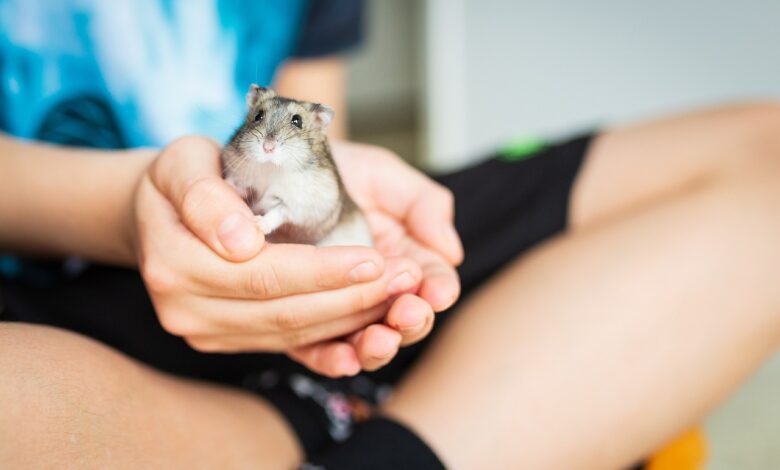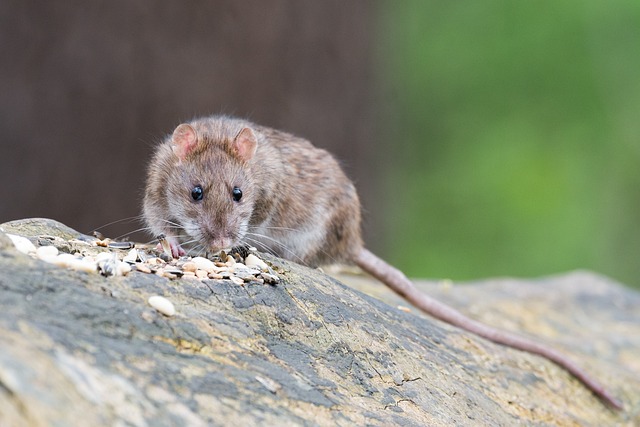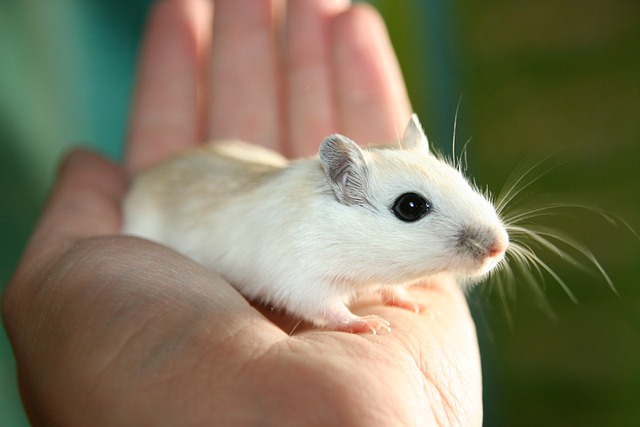Pet Rodents: Your Joyful and Playful Companions

Welcoming a pet into your home can bring immense joy and companionship. One popular and endearing choice for many households is pet rodents. These small, furry creatures are charming, intelligent, and surprisingly affectionate, making them delightful pets for both individuals and families.
Table of Contents
What Are Pet Rodents?
Pet rodents are small, furry mammals belonging to the order Rodentia. They encompass a wide variety of species, each with its own distinctive characteristics. Some of the most popular pet rodents include hamsters, guinea pigs, mice, rats, gerbils, and chinchillas. These adorable creatures have become beloved pets due to their manageable size, low maintenance needs, and gentle demeanor.
Popular Types of Pet Rodents
Let’s delve into some of the most popular types of pet rodents:
Hamsters
Hamsters are nocturnal creatures known for their round bodies and short tails. These solitary animals can be a great choice for people who prefer independent pets.
Guinea Pigs
Unlike hamsters, guinea pigs are highly social animals that thrive in the company of other guinea pigs. They are gentle, and vocal, and enjoy human interaction.
Mice
Mice are intelligent and curious rodents that can form strong bonds with their owners. They are playful and enjoy exploring their environment.
Rats
Rats are intelligent creatures that can be easily trained and can display affection towards their human caregivers. They are highly social and prefer companionship.
Gerbils
Gerbils are energetic and social animals that prefer living in pairs or small groups. They are known for their digging and tunneling behavior.
Chinchillas
Chinchillas have luxurious fur and are active animals that need plenty of space to jump and climb. They require dust baths to keep their fur clean.
Choosing the Right Rodent as a Pet
Selecting the right pet rodent depends on various factors, including your lifestyle, available space, and the amount of time you can dedicate to their care. Consider the following points before making your decision:
Assessing Your Lifestyle
Think about your daily routine and the amount of time you can spend with your pet. Some rodents, like hamsters, are more independent and require less attention, while others, like guinea pigs and rats, crave regular interaction.
Space and Housing
Different rodent species have specific habitat requirements. Ensure you have adequate space for the cage and accessories needed to keep your chosen pet happy and healthy.
Allergies
Keep in mind that some individuals may have allergies to certain rodents. Spend time with the animal you’re considering to check for any adverse reactions.
Preparing Your Home for a Pet Rodent
Before bringing your new furry friend home, it’s essential to create a safe and comfortable environment for them. Follow these steps to prepare your home:
Selecting the Right Cage
Choose a spacious and secure cage that allows your rodent to move around freely. Provide appropriate bedding material, such as shredded paper or aspen shavings.
Cage Placement
Place the cage in a quiet and draft-free area of your home. Avoid direct sunlight and extreme temperature fluctuations.
Rodent-Proofing
Rodents are excellent escape artists, so ensure that their cage is escape-proof. Also, safeguard your home against potential hazards by removing toxic plants and securing electrical cords.
Feeding and Nutrition
A well-balanced diet is vital for your pet rodent’s health and well-being. Each species has unique dietary needs, so research and consult a veterinarian to determine the best diet for your pet. In general, a rodent’s diet may consist of:
Commercial Pellets
High-quality commercial pellets formulated for your specific rodent species provide essential nutrients.
Fresh Vegetables and Fruits
Offer a variety of fresh vegetables and fruits as occasional treats. Avoid feeding sugary or fatty foods.
Timothy Hay
For some rodents like guinea pigs and chinchillas, Timothy hay is an essential component of their diet, promoting healthy digestion.
Providing Enrichment and Exercise
Pet rodents are intelligent and active animals that need mental stimulation and physical activity. Here are some ways to provide enrichment:
Toys and Chews
Offer a selection of toys and chews to keep your rodent entertained and prevent dental issues.
Exercise Wheels and Balls
Exercise wheels or balls allow rodents to burn off excess energy while having fun.
Playtime Outside the Cage
Allow supervised playtime outside the cage in a secure area to promote exploration and bonding.
Common Health Issues in Pet Rodents
While pet rodents are generally hardy, they can still face health challenges. Being aware of common issues can help you take early action if needed:
Respiratory Infections
Rodents can be susceptible to respiratory infections, which may require veterinary treatment.
Dental Problems
Overgrown teeth can be a problem for rodents, so provide appropriate items for them to chew on.
Obesity
Lack of exercise and an improper diet can lead to obesity in pet rodents. Monitor their weight and adjust their diet accordingly.
Regular Veterinary Care
Routine veterinary check-ups are crucial for your pet rodent’s health. Find a veterinarian experienced in treating small animals and schedule regular visits.
Handling and Bonding with Your Rodent
Building a bond with your pet rodent is a rewarding experience. Follow these tips for successful handling and bonding:
Be Patient
Allow your rodent to acclimate to its new environment before attempting to handle them.
Hand Feeding
Offer treats from your hand to encourage your rodent to associate you with positive experiences.
Gentle Handling
Handle your rodent gently and confidently to build trust and reduce stress.
Rodent Housing and Cages
Different rodent species have varying housing requirements. Consider these points when setting up their living space:
Cage Size
Ensure the cage is spacious enough for your rodent to move, play, and exercise comfortably.
Multi-Level Cages
For some species, multi-level cages with ramps and platforms provide extra space for exploration.
Nesting Materials
Provide nesting materials like tissue paper or hay to allow your rodent to create a cozy resting place.
Rodent Behavior and Communication
Understanding your pet rodent’s behavior and communication is essential for providing proper care and addressing their needs:
Body Language
Pay attention to your rodent’s body language to gauge their mood and emotions.
Vocalizations
Each species has unique vocalizations that convey different messages, such as fear, happiness, or hunger.
Scent Marking
Rodents use scent markings to communicate and establish territory. This is normal behavior.
Breeding and Reproduction
If you plan to breed your pet rodents, it’s essential to understand the process and responsibilities:
Separating Males and Females
Keep males and females separate unless you intend to breed them intentionally.
Gestation Period
Different species have varying gestation periods. Be prepared for the responsibilities of caring for newborns.
Finding Homes for Offspring
Have a plan in place for finding suitable homes for the offspring if you decide not to keep them.
Tips for Rodent Grooming
Regular grooming is necessary to keep your rodent’s fur and skin healthy:
Brushing
Some rodents, like guinea pigs and chinchillas, benefit from regular brushing to prevent matting and remove loose fur.
Dust Baths
Chinchillas require regular dust baths to keep their fur clean and free from oils.
Nail Trimming
Keep your rodent’s nails trimmed to prevent overgrowth and potential injuries.
Rodent Safety and Child-Friendly Pets
Pet rodents can make wonderful companions for families with children:
Supervised Interaction
Ensure that interactions between children and rodents are supervised to prevent accidental harm.
Teaching Gentle Handling
Teach children to handle rodents gently and with respect.
Hygiene Practices
Promote proper hygiene practices, such as handwashing after handling rodents.
Conclusion
Pet rodents can bring an abundance of joy, laughter, and warmth to your life. From the playful antics of hamsters to the social nature of guinea pigs, each species offers unique qualities that endear them to their human caregivers. By providing love, care, and attention, you can create a strong bond with your rodent companion, making them an integral part of your family.
FAQs
1. Are rodents good pets for children?
Absolutely! Pet rodents can be excellent pets for children, as they are generally gentle and easy to handle. However, adult supervision is crucial to ensure the safety of both the child and the pet.
2. Can I keep multiple rodents together in the same cage?
It depends on the species. While some rodents, like guinea pigs, enjoy companionship, others, like hamsters, prefer a solitary lifestyle. Always research the specific needs of your chosen species before deciding to keep them together.
3. How much exercise do pet rodents need?
Pet rodents need regular exercise to stay healthy and happy. Providing them with toys, wheels, and opportunities for playtime outside the cage can fulfill their exercise needs.
4. What is the lifespan of a pet rodent?
The lifespan of pet rodents varies depending on the species. On average, hamsters can live for about 2 to 3 years, while guinea pigs can live for 5 to 7 years or longer with proper care.
5. Can I train my pet rodent to do tricks?
Yes, many pet rodents can be trained to perform tricks and respond to commands. Positive reinforcement training methods work well with rodents, and patience is key to success.








